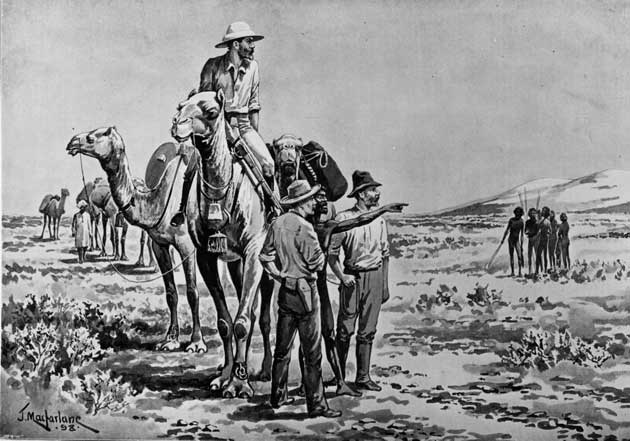Eat a camel and save the planet, Australians are told
Not only is the meat low in fat, eating it could help to protect the fragile outback, in danger of being over-run by dromedaries

After trying to persuade Australians to eat kangaroo, emu and crocodile meat over the past few decades, the nation's agribusiness leaders have turned their attention to the ship of the desert.
Last week, senior public servants were served camel at a barbecue in Canberra as part of a campaign to convince the government to add the meat to Australia's bushtucker menu. Environmentalists say that camel burgers are not only better for you, but by eating them, Australians will also be doing their bit for climate change and conservation.
Camels, imported from the Canary Islands in 1840, have bred in such large numbers that the population is out of control. It is estimated that more than a million of the beasts now roam the outback, inflicting major damage on desert ecosystems, scarce water supplies and remote Aboriginal communities. As ruminants, with a tendency to expel greenhouse gases from both ends, the animals also add to global warming.
"We are very concerned that as the
climate changes and the continent dries out further, the camel impact will worsen as they throw more pressure on water resources," said Glenn Edwards, lead author of a new study from the Desert Knowledge Co-operative Research Centre. "Because camels are cautious animals and beautifully camouflaged, and because these areas are sparsely populated, most people are simply unaware of the sheer numbers of these pests – or the extent of the damage they are causing."
With the population growing at about 80,000 a year and the annual damage bill to farmers put at several million pounds,the government is being urged to order a cull. As many as 400,000 camels may have to be destroyed,the report concludes. "Our overall aim is to get the population density down to one camel for every 10 square kilometres eventually," Dr Edwards said. "This keeps the damage they can do within reasonable limits."
Murray McGregor, an agribusiness lecturer, believes that eating camel could provide the perfect solution. "It's beautiful meat," he said. "It's a bit like beef – it's as lean as lean, and it's an excellent health food." But if past experience is anything to go by, Australians may prove unwilling to toss a camel steak on the barbie. Previous attempts to market kangaroo have failed to excite domestic appetites, partly because of a natural reluctance to eat the national emblem.
While the camel may not have the same symbolic importance, it has played a significant role in Australian history. Under the care of Afghans, the one-hump Camelus dromedarius made a substantial contribution to the development of the outback. By 1901 there were an estimated 6,000 working camels in Australia, and they were still being used as recently as the 1950s. But as they were replaced by trains and motor vehicles, camels were allowed to run wild. Half a century later, Australia is counting the cost.
Join our commenting forum
Join thought-provoking conversations, follow other Independent readers and see their replies
Comments
Bookmark popover
Removed from bookmarks